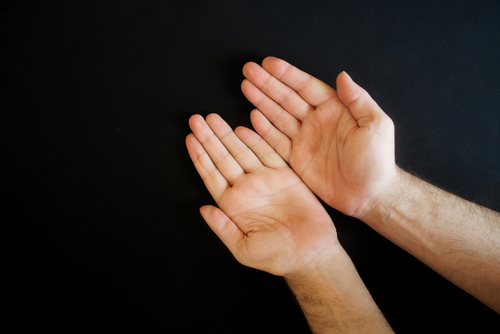In this week’s Torah portion, Parshas Terumah, we discuss the intricate details involved in the building of the Mishkan, the portable tabernacle used in the desert by the Jews. Why does the Torah go to such a detailed extent to describe the building of the Mishkan? In fact, this is one of five consecutive parshios, Torah portions, that deal with this topic. Could the Torah not simply have said, “and then Bnei Yisrael (the Jewish people) built a Mishkan to be used for their service of G-d in the desert.” Would that not suffice? Instead, in our parsha alone, we deal with the contribution of gold, silver, copper, yarn, goat’s hair, tanned ram skins, acacia wood, oil and spices. we then follow with the extensive detail about how to use both gold and acacia wood in the building of the aron, the ark. We then go into the excessive details used for building the cherubim and other furnishings for the Mishkan.
The Ramban (Nachmanides, 1194-1270) explains that our parsha deals with the building of the Mishkan and all of its instruments because we just previously experienced the revelation atop Mt. Sinai and made our covenant with G-d. By doing so, we established ourselves as a holy people who now are worthy of having a Mikdash, Holy Temple. What is so special about a Mikdash? The Ramban expresses that the Mishkan (a temporary Mikdash) is none other than the earthly home for Hashem’s Divine Presence. In this “house,” Moshe would be able to continually speak to Hashem. Therefore, what Bnei Yisrael experienced at Mt. Sinai was not a one-time event that is now over. Instead, the relationship forged at that moment is to be continuing and we are to take Hashem with us wherever we are to go. Hashem has given us the architectural blueprints for His house and is allowing us to build it in our neighborhood!
The Mikdash that we are so carefully erecting is, in a sense, a physical snapshot and microcosm of the most momentous event in our history- the Revelation. By using precision in the making of Hashem’s earthly home, we are expressing our desire to continuously pour effort into our connection with Him.
The Ramban then continues to enumerate how various instruments in the Mishkan mirror different aspects of the Revelation at Mt. Sinai.
However, today, with neither the Mishkan nor the Bais HaMikdash, how are we to find relevance and understanding in the words of our parsha? Does the building of this structure and the enumerative lists of its contents resonate for us?
The Jewish people, during the time of the prophet Yechezkel (Ezekiel), dealt with a similar issue. The Babylonians had just destroyed the Bais HaMikdash and the people were in great despair. Yechezkel, in an attempt to comfort his nation, mimics the words of Hashem by saying, “And I will be to them a small sanctuary [Mikdash Me’at] for the Jews in all the lands that they will be.” (Yechezkel 11:16)
What is this “Mikdash Me’at”? The Gemara in Megillah (29a) quotes our verse from Yechezkel and expounds “Mikdash Me’at” to refer to all of the synagogues, study halls and yeshivas that were established in Babylonia after the destruction of the Bais HaMikdash.
The Jews lived on! Not only did we survive the destruction, but we even flourished by consecrating places to pray and learn Torah. Hashem could be accessed through multiple venues; we could still capture the moment of Revelation and its continuation in the Mishkan in new ways and in new places.
Rambam (Maimonides, 1135-1204) seems to believe that the kedusha, holiness, of a house of worship or yeshiva is recognized by the Torah to be inherent. In his Minyan HaMitzvos HaKatzar, he explains that both the contents of the Bais HaMikdash and of a Bais Knesses (synagogue) cannot be destroyed. This is due to the fact that the content have holiness on a Torah level.
Both the Ran (Rabbi Nissim ben Reuven, 1320-1380) and the Ramban, based on another passage from Megillah (26b), argue the opposite- that a synagogue and a yeshiva have the status of holiness on a rabbinic level. This means that it is a status imposed upon the structure by the rabbis, not one inherent.
The Talmudic source they use explains that a synagogue only has holiness when there are mitzvah contents in it, such as tzitzis. Once they are gone, the kedusha, its holy status, is gone.
Both of these perspectives seem to insinuate one basic premise: it is the contents of a space that give it holiness. Each one of us, despite a lack of direct access to the Mishkan or the Bais HaMikdash, has the ability to create sacred space. By surrounding ourselves with words of Torah, mitzvos, chesed (kindness) and other paradigms of kedusha we can allow for personal and direct access to Hashem.
When we read the meticulous details of this and the following weeks’ Torah portions, we should pay careful attention to the specificity of the lists of building instructions for the Mishkan. We should all build our own “Mikdash Me’at” with just as much care. This way, the Revelation lives on with us even until today. Our personal connection with Hashem is ongoing!
Rabbi Mordechai Weissmann



Avraham Yaakov
says:For architectural renderings of —
The Mishkan [Parshas Trumah]:
http://home.comcast.net/~a.rokach/Mishkan/Images.pdf
and
http://home.comcast.net/~a.rokach/Mishkan/TorasHaMishkan.pdf
Bais HaMikdash HaShlishi TVBB”A [Haftorah of Parshas Tetzaveh]:
http://home.comcast.net/~a.rokach/site/?/page/Bais_HaMikdash_HaShlishi_TVBBA